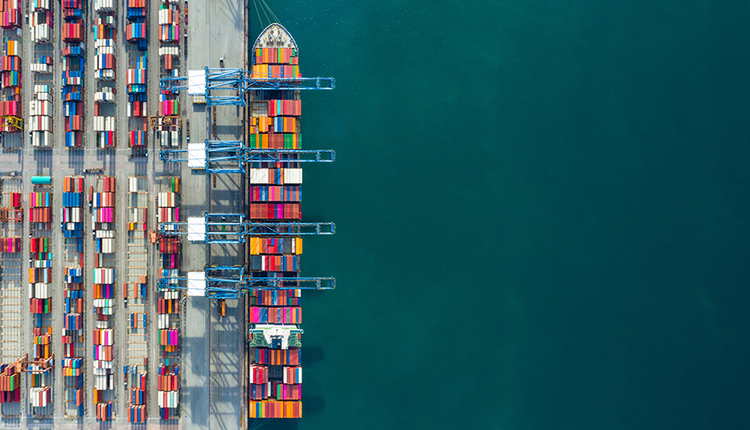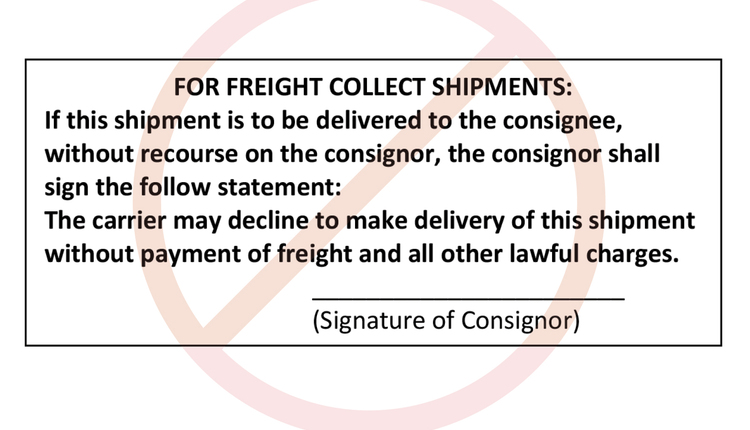The legal characteristics of the entities providing transportation service in international commerce fall into three broad categories: International Air, International Ocean, and North American Ground Transportation.
Within each of these categories there are three major subcategories. The first subcategory is comprised of the carriers. These are the entities that actually operate the airplanes, ocean ships, trucks, and trains to move the cargo.
The second subcategory is comprised of what I call “true intermediaries.” These entities contract with carriers to transport shipments on behalf of their shipper customers. The third subcategory is what I call “hybrid intermediaries”. These are intermediaries that are shippers with respect to the carriers and carriers with respect to their shipper customers. It should be noted that while each type of provider that we will analyze are separate and distinct from a legal point of view, a single corporate entity may function in more than one of these capacities.
For parcel shippers, it is very important to understand the critical distinctions between carriers and the various intermediaries when doing business with them. First, when a shipper deals directly with a carrier and pays its charges, the shipper’s payment obligations have been met. However, when dealing with an intermediary, when a shipper pays the intermediary its invoice, it could still be liable to the carrier if the intermediary fails to pay the carrier who actually transported the shipment.
Second, carriers and hybrid intermediaries are liable for loss and damage to cargo while in transit, while, as a general rule, true intermediaries will not be. Details may be found in the Parcel Counsel Special Edition: Loss & Damage to Cargo in International Shipments in the 2022 Cross-Border & Global issue of PARCEL (visit PARCELindustry.com/LossandDamagetoCargo to read).
International Air
An air carrier is defined by federal statute as a “citizen of the United States undertaking by any means, directly or indirectly, to provide air transportation.” While many shippers do deal with airlines (direct air carriers), most shippers deal with air freight forwarders.
There are many nuances to the term “air freight forwarder”. They often function as an “indirect air carrier” defined by federal statute as follows: An “indirect air cargo air carrier” is a US citizen who uses in whole or in part the services of an air carrier for all or part of the indirect air transportation of property.
A “foreign air freight forwarder” is defined as “any person not a citizen of the United States that undertakes indirectly to engage in the air transportation of property.
Air freight forwarders can also act as agents for an air carrier when it reserves the option to do so when a shipment is accepted. In this role they are a true intermediary, not a carrier. An air freight forwarder becomes an “indirect air carrier” when it issues its own airway bill as opposed to issuing the airway bill of the airline for which it is acting as an agent.
Pursuant to federal regulation, every indirect cargo air carrier is required to give notice in writing to the shipper when any shipment is accepted of the existence or absence of cargo liability accident insurance, and of the limits on the extent of its liability, if any. This notice needs to be clear and conspicuously included on its rate sheets and airwaybills and, for foreign air freight forwarders, any other documentation.
International Ocean
In international ocean shipping, there are three types of legal entities: Ocean Carriers, Non-Vessel Operating Common Carriers (NVOCCs), and Ocean Freight Forwarders. An “ocean carrier” is defined by statute as a vessel operating common carrier who holds itself out to the general public to provide transportation by water of passengers or cargo between the United States and a foreign country for compensation and uses, for all or part of that transportation, a vessel operating on the high seas.
A “Non-Vessel Operating Common Carrier (NVOCC)” is defined as a common carrier that does not operate the vessels by which the ocean transportation is provided and is a shipper in its relationship with an ocean carrier. Because an NVOCC is considered to be a carrier even though it does not actually operate vessels, it is subject to the provisions of the Carriage of Goods by Sea Act (COGSA) just as an ocean carrier is.
An “ocean freight forwarder” is defined as a person that in the United States, dispatches shipments from the United States via an ocean common carrier and books or otherwise arranges space for those shipments on behalf of shippers, and processes the documentation or performs related activities incident to those shipments. It is not considered to be a carrier and, accordingly, is not subject to liability under COGSA. Part of the licensing requirements for an ocean freight forwarder is that it hold a $75,000 surety bond to secure payment by the ocean freight forwarder for the freight charges of the ocean carriers which it uses.
The statutes also include the definition of an “ocean transportation intermediary” stating that the term refers to both ocean freight forwarders and non-vessel operating common carriers. Although this statute describes an NVOCC as an intermediary, an NVOCC is what I call a “hybrid intermediary.”
North American International Shipments
The legal entities providing transportation service from the United States to Mexico or Canada are the same as those providing transportation services within the United States. They include motor carriers, surface freight forwarders, transportation brokers, railroads and companies arranging for transportation services by railroad often called “intermodal marketing companies (IMCs).”
The statutory definition of a “motor carrier” is pretty straightforward: A person providing commercial motor vehicle transportation for compensation.
A “surface freight forwarder” is a person holding itself out to the general public to provide transportation of property for compensation and in the ordinary course of its business assembles and consolidates shipments or provides for breakbulk and distribution operations of the shipments AND assumes the responsibility for the transportation from the place of receipt to the place of destination AND uses for any part of the transportation either a motor carrier or a rail carrier. The critical feature of a surface freight forwarder is that they are considered to be a shipper with respect to the linehaul carrier and a carrier with respect to its shipper customers. Since a surface freight forwarder is considered to be a carrier with respect to its shipper, it has the same liability for loss and damage to cargo as does a motor carrier.
A “transportation broker” is a person that arranges for transportation by motor carrier for compensation. Since a transportation broker is a true intermediary, generally speaking it does not have liability for cargo loss and damage.
Canadian motor carriers will transport shipments between Canada and the United States and Canadian brokers will arrange for such shipments. With respect to shipments from Mexico to the United States, Mexican carriers typically do not cross into the United States.
Cabotage
There is another critical concept that is involved in international transportation, that is, cabotage. Cabotage is defined by the Merriam-Webster dictionary as “trade or transport in coastal waters or airspace or between two points within a country”. Under US law, foreign carriers are prohibited from engaging in cabotage within the United States. Many other countries have similar prohibitions against cabotage.
The effect of this regulation means that, for example, a Canadian motor carrier could transport a load of cargo from Toronto to Dallas (assuming it had the appropriate US FMCSA licenses) and then return to Toronto with a load that it picked up in Dallas. It could also go without cargo from Dallas to Chicago, and then take a shipment from Chicago to Toronto. What is prohibited is for the Canadian motor carrier to take a shipment from Dallas to Chicago. While a motor carrier is used in this example, the prohibition includes all modes of carriage — motor, air, and ocean.
Brent Wm. Primus, J.D., is the CEO of Primus Law Office, P.A., the Senior Editor of transportlawtexts, inc., and Director of Virtual Education for the Transportation and Logistics Council, Inc. Previous columns, including those of William J. Augello, may be found in the “Content Library” on the PARCEL website (PARCELindustry.com). Your questions are welcome at brent@primuslawoffice.com.
This article originally appeared in the 2023 Global/Cross-Border edition of PARCEL.



















